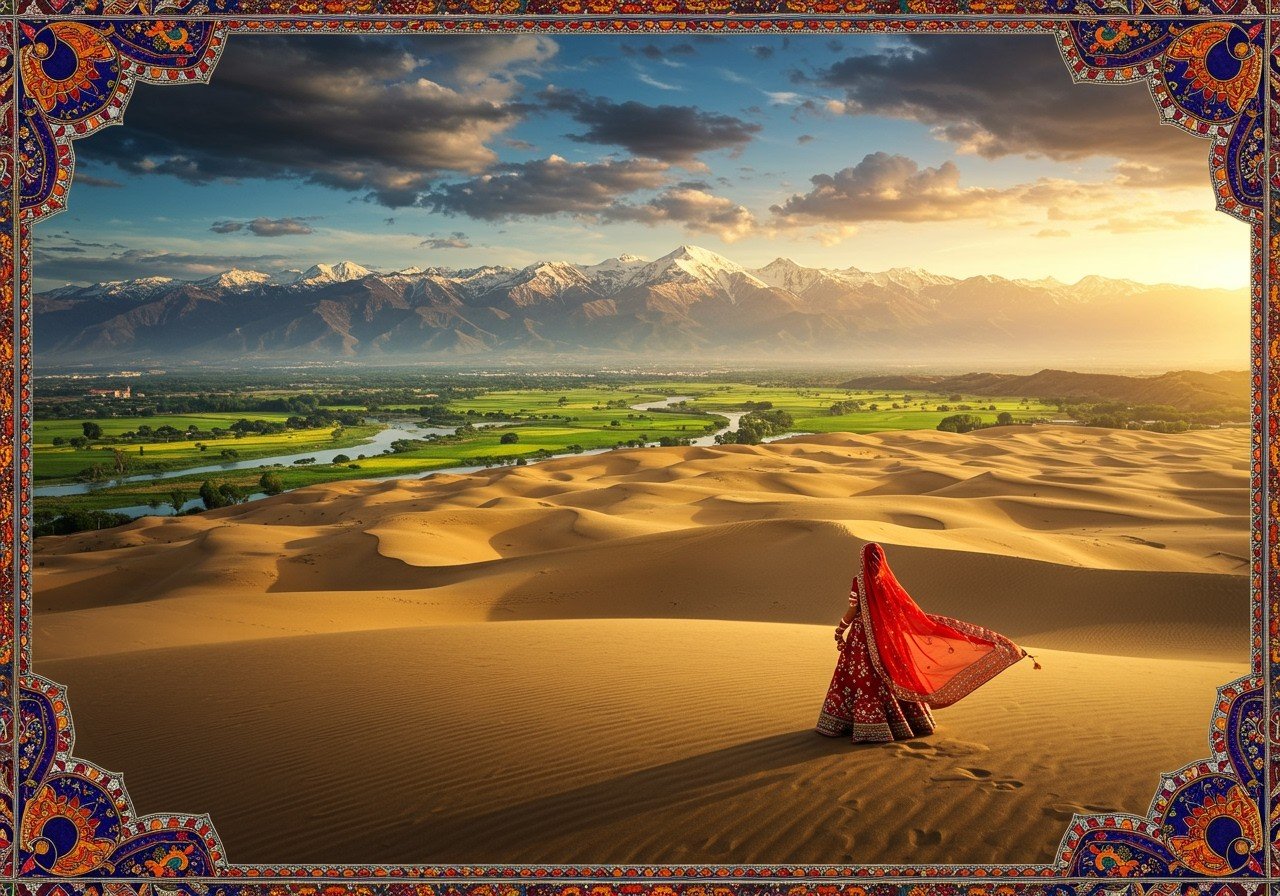
Northwest India, a region rich in cultural heritage and natural beauty, presents a fascinating interplay of diverse climates and geographical features. From the towering Himalayas to the sprawling Thar Desert, this area captivates with its varied landscapes and weather patterns. Understanding these elements is key to appreciating the region’s unique environment and its influence on local traditions and lifestyles.
Geographical Wonders of Northwest India
Northwest India encompasses a variety of geographical elements that shape its climate and culture. This region includes Punjab, Haryana, Rajasthan, parts of Gujarat, and Jammu & Kashmir. The majestic Himalayan mountain range stands tall along the northern border, acting as a natural barrier against cold winds from Central Asia. These mountains also contribute to the region’s unique weather patterns. Further south, the Thar Desert stretches across a vast expanse of Rajasthan, characterized by its iconic sand dunes and arid landscape.
The fertile Indo-Gangetic plains, known for their rich alluvial soil, play a crucial role in agriculture, supporting the livelihoods of millions. These plains are a breadbasket for the region. The ancient Aravalli Range, one of the oldest mountain ranges in the world, significantly influences weather patterns, particularly in Rajasthan. It acts as a barrier, affecting rainfall distribution. Adding to the region’s geographical diversity is the Great Rann of Kutch in Gujarat, a seasonal salt marsh that transforms into a breathtaking white desert during dry periods.
Navigating the Climate of Northwest India
The climate of Northwest India mirrors its geographical diversity, ranging from arid desert conditions to humid subtropical zones. The Thar Desert experiences some of the most extreme temperatures, soaring to nearly 50°C during the scorching summers. Conversely, winters in the desert can be surprisingly cool, with temperatures dropping as low as 1°C. This stark contrast highlights the desert’s extreme nature. The aridity results from high evaporation rates exceeding the limited rainfall received during the southwest monsoon season.
The arrival of the monsoon season, from June to September, brings a welcome respite from the intense heat. The monsoon rains rejuvenate the parched land, providing much-needed moisture for agriculture. However, this period also brings high humidity and the potential for floods, posing challenges for local communities. The monsoonal influence is deeply intertwined with cultural practices and economic activities, shaping the rhythm of life in the region.
Seasonal Rhythms of Northwest India
- Summer (April-July): Characterized by scorching temperatures and dry, hot winds known as the “Loo.” This period demands careful adaptation to the extreme heat. Staying hydrated and seeking shade are essential during these months. Consider cooling camphor products from poojn.in to ease the discomfort.
- Monsoon (June-September): While offering relief from the summer heat, the monsoon season brings heavy rainfall, high humidity, and the risk of floods. This period calls for protective measures for both people and property. Candles and lamps become essential for maintaining light during power outages.
- Post-Monsoon (October-December): This transitional period sees clear skies and significant temperature fluctuations between warm days and cool nights. It’s a time for enjoying the pleasant weather before the onset of winter. Incense sticks can create a calming atmosphere during this time.
- Winter (December-February): Winter brings cooler temperatures, averaging 10-15°C. This is a time for warm clothing and indoor activities. Consider ghee for havans and other warming rituals offered by poojn.in.
Poojn.in: Supporting Traditions Through Every Season
Poojn.in understands the unique needs of Northwest India’s diverse climate and geography. We offer a curated selection of products designed to support your religious and cultural practices throughout the year. From weather-resistant storage solutions to specialized items for different seasons, poojn.in is your trusted partner in maintaining traditions.
Conclusion
Northwest India’s dynamic interplay of climate and geography creates a vibrant tapestry of life. By embracing the challenges and opportunities presented by each season, the people of this region continue to thrive, showcasing a remarkable resilience and adaptability. Poojn.in is proud to serve this region, offering products that enhance cultural practices and connect individuals to their traditions.
FAQs
What defines the climate of Northwest India? Northwest India experiences diverse weather patterns, including hot summers, cold winters, and a significant monsoon season. The Thar Desert contributes to extreme temperatures and dry conditions, while other areas experience more moderate climates.
Which mountain ranges are present in Northwest India? The prominent Aravalli Range traverses Rajasthan, influencing rainfall and temperature patterns. The towering Himalayas stand along the northern border, acting as a natural barrier.
How does the Thar Desert impact the region’s climate? The Thar Desert is responsible for extreme temperature variations and arid conditions. Its presence also plays a role in shaping monsoon patterns in the region.
What characterizes the geography of Northwest India? Northwest India features a diverse landscape encompassing deserts, fertile plains, and mountain ranges. The Thar Desert, the Indo-Gangetic plains, and the Aravalli Range are key geographical features.


